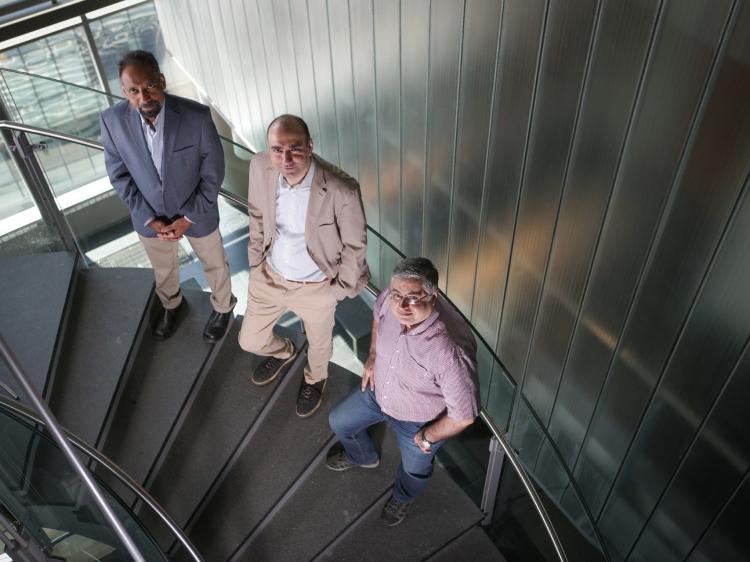By Patrick Lejteny

Muthukumaran Packirisamy with fellow researchers Mohsen Habibi and Shervin Foroughi: "Ultrasonic frequencies are already being used in destructive procedures like laser ablation. We wanted to use them to create something."
A platform technology created by a team of Concordia researchers has been named one of the most significant scientific breakthroughs of 2022 by Québec Science, the province's leading science magazine.
Direct sound printing uses ultrasound waves to generate sonochemical reactions in a silicon polymer to remotely create precise, complex 3D objects in areas not easily reached by conventional methods. The researchers introduced the technology in an article in Nature Communications in April.
Mohsen Habibi, a research associate at Concordia's Optical-Bio Microsystems Lab, PhD student Shervin Foroughi, former master's student Vahid Karamzadeh, and Muthukumaran Packirisamy, a professor and Concordia Research Chair in the Department of Mechanical, Industrial and Aerospace Engineering at the Gina Cody School of Engineering and Computer Science, worked together on the technology's development.
According to the researchers, direct sound printing can provide a foundation for multiple applications across a range of industries, from aerospace engineering and maintenance to microfluidics and medical sensors.
"We know sound can be used to move or ablate specific objects," Packirisamy says. "But this proves that sound can also be used to build something solid even inside the body remotely from outside. That's the beauty of this technology when other technologies cannot do that."
Mourad Debbabi, dean at the Gina Cody School, calls Packirisamy's groundbreaking research inspirational.
"I am proud to see his innovative work being recognized by Québec Science. This direct sound printing technology opens doors to new 3D printing methods for many industries, and it is exciting to see such developments coming from the Gina Cody School."
For Dominique Bérubé, vice-president of research and graduate studies, the most exciting thing about this discovery is that it opens the possibility of remote 3D printing inside the body of implants and engineered tissues.
"I would like to congratulate the research team behind this breakthrough technology for such a well-deserved recognition."
Read the cited paper: "Direct sound printing."













